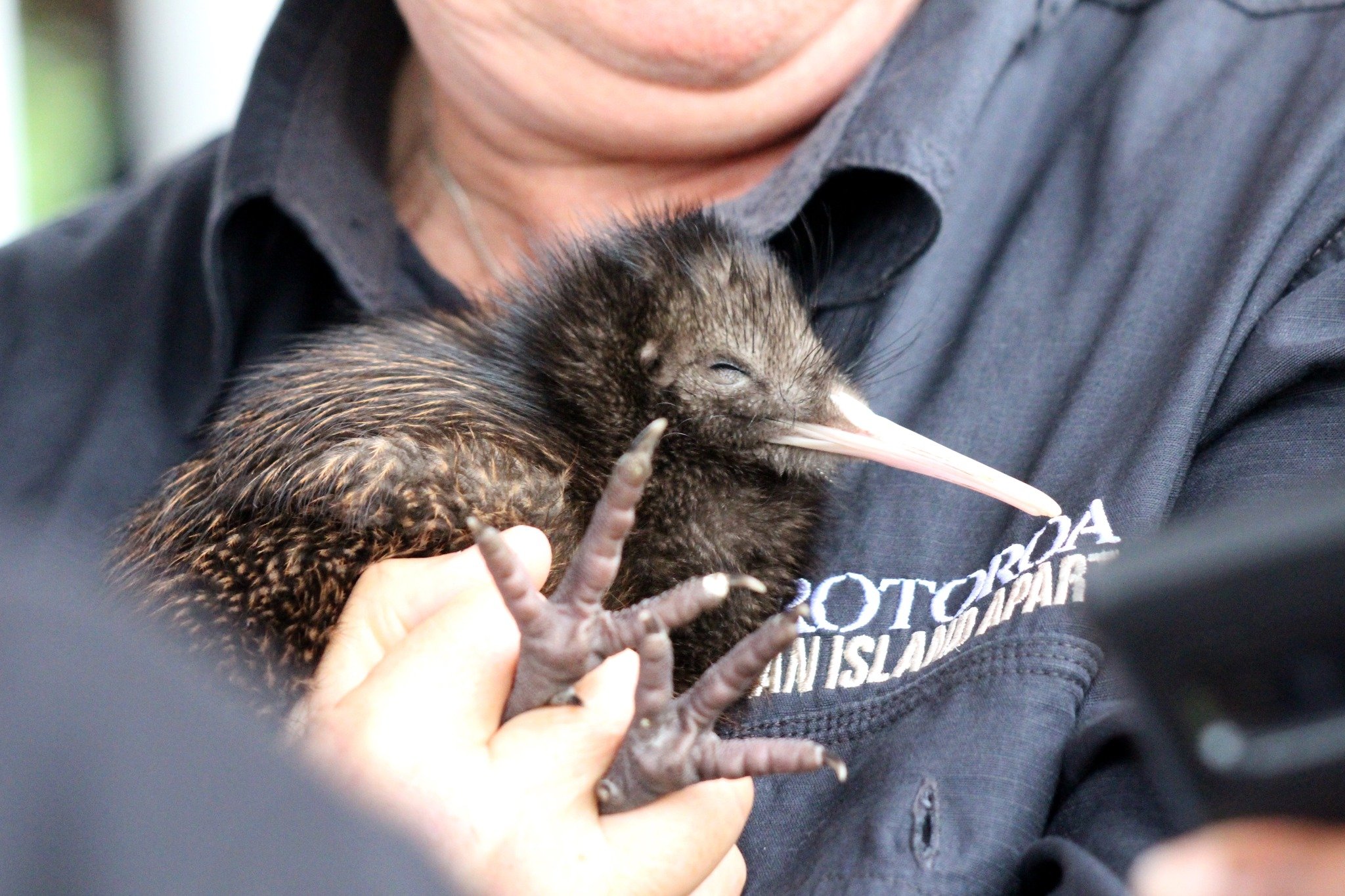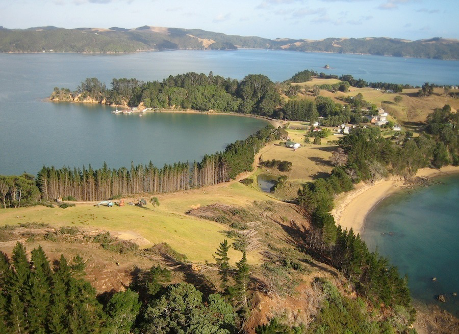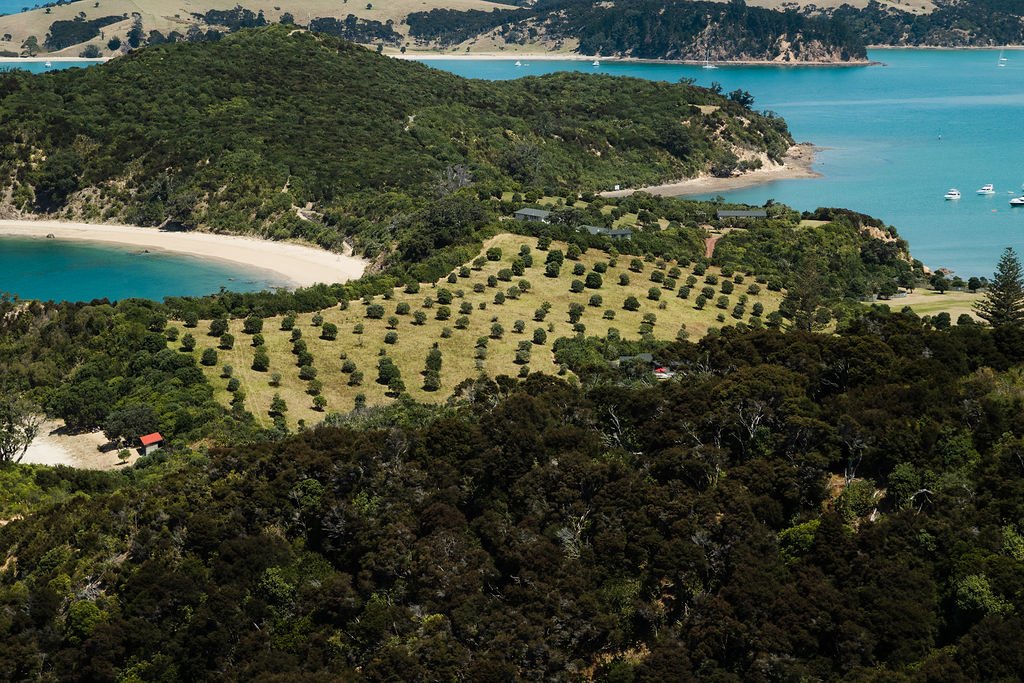The islands of the Hauraki Gulf / Tīkapa Moana o Hauraki — Rotoroa Island
Spreading over more than one million hectares, the sparkling waters of the Hauraki Gulf are home to many special islands - from the iconic dome of Rangitoto to the island sanctuary of Tiritiri Matangi - each island has its own fascinating history and distinctive natural beauty.
Many of Waiheke’s neighbours are already predator-free, which would allow species to naturally relocate to Waiheke Island one day. And looking at how the wildlife on these islands has prospered - gives us an idea of what could happen on Waiheke.
Eradicating predators from an island is no easy feat. The challenges are immense, yet the unwavering commitment and support of the community, coupled with the tireless efforts of countless conservation staff, can turn this dream into a reality. This collective force, in addition to being vigilant with biosecurity, is a vision worth working towards.
Rotoroa Island, Hauraki Gulf
#2 - Rotoroa Island
Separated from Auckland by just an hour's boat journey, Rotoroa Island stands as a testament to what’s possible when people collectively unite with a vision. Amidst its tranquil landscapes, one can almost hear the echoes of passionate voices from the past, dreaming of a thriving wildlife sanctuary for future generations to enjoy.
Within four years of the Salvation Army’s departure, The Rotoroa Island Trust was established in 2008, founded on the generous vision of Annette and Neil Plowman. Their aspiration, shared and nurtured by volunteers, partners, and contractors, set the wheels in motion for the island’s transformation.
The reforestation initiative saw over 300,000 native trees planted across 50 of the island’s 80 hectares, and around 60 invasive weed species were eliminated. Today, Rotoroa boasts lush forest canopies, fertile soils, and vibrant ecosystems, cradling a symphony of wildlife.
Takahē family on Rotoroa by @annas_photos
Yet, the game-changer was Rotoroa’s successful bid against predators. Rodents threatened the island's revitalisation with their penchant for destruction, from treetops to soil depths. Their omnivorous nature meant that they consumed fruits, flowers, eggs, chicks, insects, and lizards. The fragile ecosystems could not sustain life under such pressure. Nature needed assistance to rebound, and that's what the team involved in Rotoroa’s restoration provided. Rats were eradicated in 2010, and mice eradicated three years later in 2013.
This achievement paved the way for the recovery of resident native species’ whose numbers had been decimated by the presence of rodents, especially small bush birds like tauhou (silvereye); tūī, riroriro (grey warbler) and pīwakawaka (fantail). Other species already present but heavily impacted by the presence of rodents recovered. These included oi (grey-faced petrel), kākā, weka, tūturiwhatu (NZ dotterel), and tōrea pango (oystercatcher).
Simple sounds and visual signs heralded the successful removal of rodents. The chirping of cicadas, sightings of wētā, and the resurgence of vital coastal flora such as the renga lily and horokaka (iceplant) all signaled a revived ecosystem. These were some of the key indicators that Jo Ritchie, Rotoroa’s ecologist and operations manager, used to gauge the success of the island’s restoration efforts.
A video by Rotoroa Island Trust from 12 years ago captures the island’s journey. Phil Salisbury, one of Rotoroa’s former Island Rangers, and now Te Korowai o Waiheke’s Rat Team Leader, watched the changes and played a key role in the eradication and recovery programmes. Today, he can witness the once-silent trails come alive with the song of tīeke (saddleback), so profound that it feels like a journey back in time. Kiwis now freely traverse the forest, and the island’s takahē family happily graze alongside visitors.
Awhi the kiwi chick being released on Rotoroa Island by GwynLewis
Following Rotoroa’s predator-free eradication successes, several important species were introduced through collaborations with the Department of Conservation and Kiwis for kiwi.
The Department of Conservation leads the Takahē Recovery Programme as part of a metapopulation management initiative. Despite the takahē’s impressive stature, only a little over 400 exist in the wild. Rotoroa Island offers these birds a place of sanctuary, helping work towards the programme’s goal of 125 breeding pairs at safe sites.
Kiwis for kiwi’s Operation Nest Egg initiative enhances survival rates of Coromandel brown kiwi chicks from 5% to 60%, with Rotoroa used as a safe ‘creche’ site until their release back into the wild.
Rotoroa is more than just a haven. “It’s a place people can visit to see what predator-free islands feel and sound like. And species currently living on Rotoroa may one day expand to Waiheke,” says Jo Ritchie.
Looking at Rotoroa, we're reminded of the potential for Waiheke as it works towards becoming predator-free. It can somewhat act as a tangible blueprint of ‘what could be.





